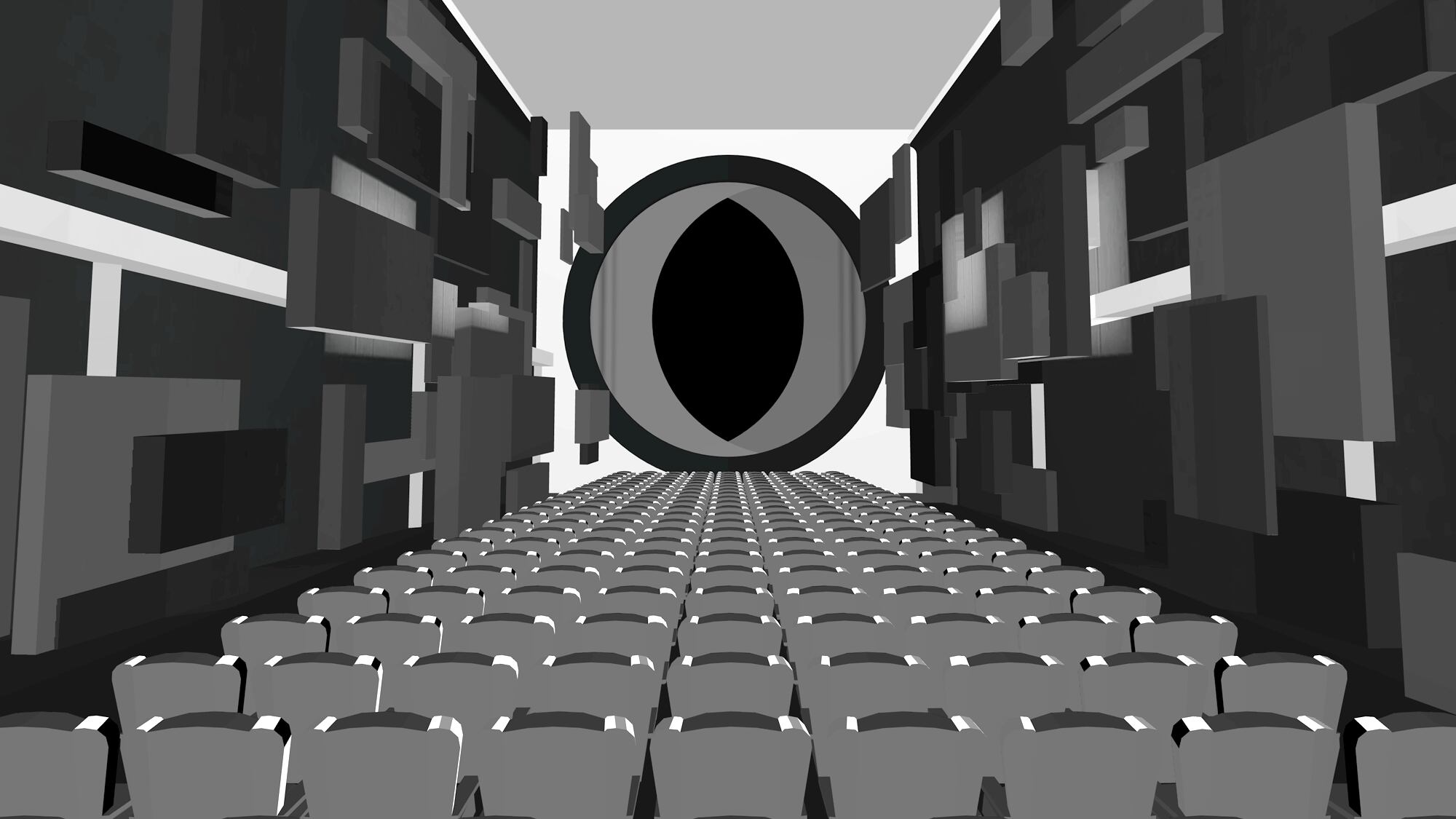In 1929 New York, Frederick Kiesler had a vision for the ideal movie theater. In 2017 Portland, Jeremy Rotsztain is making that vision a reality—sort of.
Rotsztain has re-created Kiesler's The Film Guild Cinema, one of the first movie theaters to ever exist, inside a virtual-reality program titled The House of Shadow Silence. This week at the real-life Academy Theater, a few people at a time will be able to wear an Oculus Rift headset that will transport them to a black-and-white version of the historic theater. They'll be able to watch a vibey, six-minute film that samples the work of Hans Richter, an avante-garde filmmaker whose work forgoes narrative for simple shapes and movement (one of Richter's films was screened at the Film Guild's opening weekend in 1929).
But House of Shadow has much higher ambition than rousing film geek nostalgia. "I was thinking about the indebtedness VR has to film, but also of the kind of new possibilities it enables," the animator and artist explains while sitting in his airy Northwest studio. With added interactive features, Rotsztain's work takes Kiesler's dreams beyond what the Austrian-American architect could have imagined almost a century ago.
Kiesler's cinema is gorgeous. The clean, modernist interior has ominous Kubrickian symmetry, and the circular screen looks out at you like a giant eye. But his plans for the Film Guild went far beyond aesthetics. Kiesler wanted it to be a place where "the spectator must be able to lose himself in an endless, imaginary space"— along with the main screen, there'd be projections on the walls and ceiling and choreographed lighting like you'd see in a play.
Unsurprisingly, Kiesler's ideas were never realized. There wasn't the budget, let alone the technology, for what Kiesler was proposing—the first non-silent film was released just two years before the Film Guild opened.
So Rotsztain is picking up that quixotic vision where Kiesler left off. "We're now at a time when we can realize it without Hollywood budgets, or maybe with Hollywood budgets," says Rotsztain. "It's definitely a much more democratic time for this kind of medium." (Participating in The House of Shadow Silence is free).
In the black-and-white VR program, you look out into the Film Guild from a movie theater seat. The lights dim and you can hear the ticking of film running through a projector. Then, you start floating. Your virtual chair lifts up into the air as Richter's shapes populate the screen and the walls, and you move toward the front of the theater. You fly through the screen and enter into the strange void of the expressionist film, where you hurtle through a dark void and float up through the darkness among monolithic white rectangles.
The House of Shadow Silence is the kind of dystopian image VR skeptics fear—rows of people sitting shoulder to shoulder, but cut off from each other by the screen over their eyes. Human interaction is a concern for Rotsztain, too. In the final version, you'll be able to see the other theatergoers (or rather, their shadow-like, computer-generated contours) floating in chairs next to you. In one of the scenes where you're floating among Richter's shapes, you can trigger musical notes by looking at different forms. "You'll all kind of create this cacophony together," explains Rotsztain.
Less than two years after it opened, the Film Guild was renamed the 8th Street Playhouse. By the '70s, its striking circular screen was replaced by a standard rectangle. But in a strange twist on Kiesler's dream of an immersive theater, it helped found the tradition of participatory Rocky Horror Picture Show screenings along with its Greenwich Village neighbor, the Waverly. The theater closed in '91 and now houses office space for a hospital. "Next time I'm in New York," says Rotsztain, "I'm going to try and see if I can talk to the realtor or something like that and try and get in and see if there's any little bit left."
Related: "Dunkirk" is a movie without any characters, but that's what makes it awesome
While Rotsztain says he's more interested in abstraction, he sees the possibility for something more narrative than House of Shadow. "Look at Dunkirk," says Rotsztain. "You could do that same thing in VR pretty well." (Or A Ghost Story or the Twin Peaks revival, for that matter).
Related: "A Ghost Story" is an introspective, head-scratching exercise in magical realism
But Rotsztain also believes the possibilities of House of Shadow don't necessarily have to do with film at all. "When they're back in the real world," says Rotsztain about House of Shadow's participants, "It's kind of neat that they'll think of the physical world as being more malleable."
SEE IT: The House of Shadow Silence is at the Academy Theater, 7818 SE Stark St. It shows every 20 minutes, 5-8 pm Friday, August 4 and 1-5 pm Saturday, August 5. Free, reservations can be made here.
